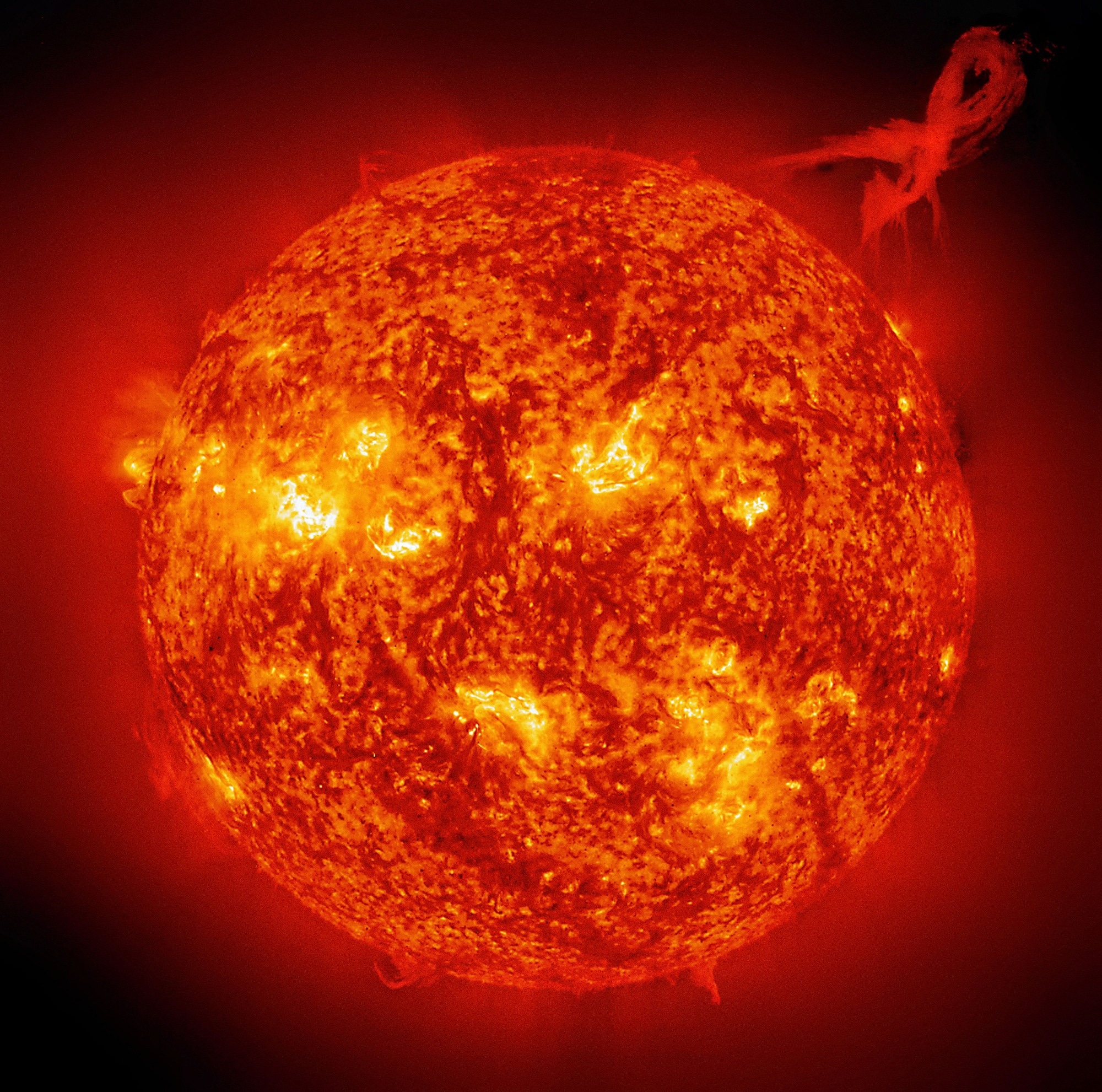The Sun is not as silent as it first appears, and various solar activities occur every second. These processes, which are connected to the sun's magnetic fields, occur along with the collection and release of energy.
 A large twirling solar prominence with complex magnetic field structure. Image Credit: Extreme ultraviolet Imaging Telescope onboard the SOlar and Heliospheric Observatory
A large twirling solar prominence with complex magnetic field structure. Image Credit: Extreme ultraviolet Imaging Telescope onboard the SOlar and Heliospheric Observatory
The topological characteristics and nonpotentiality of the solar magnetic field can be quantitatively described by magnetic helicity. Understanding the mechanism of energy transfer from production in the solar interior to accumulation in the corona could be aided by research into the accumulation and transportation of magnetic helicity.
By using the helicity flux integration method and the finite volume method, a research team from the National Astronomical Observatories of the Chinese Academy of Sciences (NAOC) calculated the accumulated magnetic helicity through the photosphere (H_m^p) and the instantaneous relative magnetic helicity in the corona (H_m^c).
The Astrophysical Journal published the results of this study.
The consistency of H_m^c and H_m^p was partially influenced by the magnetograms’ resolution and the computation techniques.
The nonlinear force-free field (NLFFF) model derives the coronal magnetic fields from photospheric magnetic fields. This study assesses the value of the NLFFF model and serves as a guide for ongoing comparison research on other magnetic helicities.
The study is credited to the excellent data from the Solar Magnetic Field Telescope, which is independently developed by Chinese scientists and has been steadily operating for nearly 40 years.
Quan Wang, Study First Author, National Astronomical Observatories of the Chinese Academy of Sciences
Dr Shangbin Yang, also from the National Astronomical Observatories of the Chinese Academy of Sciences and corresponding author of the study, stated, “Our research will help to better understand the future observations from the Full-disk MagnetoGraph, the first Chinese space magnetograph, which is a main payload on the scientific satellite ASO-S.”
In the future, we will expand this method to the dissipation of helicity during solar eruptions.
Mei Zhang, Chief Scientist, Huairou Solar Observing Station (HSOS)
HSOS is one of the significant NAOC stations. It is situated on an island close to the Huairou Reservoir’s north bank and was established by academician AI Guoxiang in 1984. The station’s primary scientific goal is to detect and analyze the magnetic and velocity fields of the sun at various altitudes in its atmosphere.
Journal Reference:
Wang, Q., et al. (2022) Comparison of Two Methods for Calculating Magnetic Helicity in the Solar Corona. The Astrophysical Journal. doi:10.3847/1538-4357/ac5593.